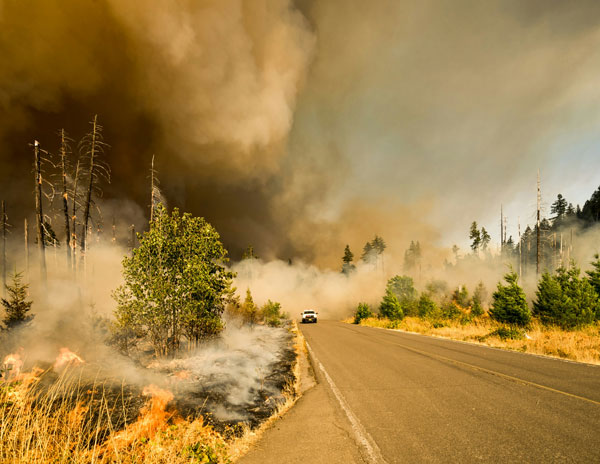Japan encounters the biggest wildfire in multiple decades

[Image of a wildfire, Photo Credit: Unsplash]
On February 26, 2025, the city of Ofunato in Japan’s Iwate prefecture was suddenly engulfed in a forest fire, marking the largest wildfire in 50 years- surpassing the previous record was Fukuoka wildfire in 1975.
The flame initially ignited in the Ryōri region and was reported at 1:02 p.m that day.
Including Miyagi and Aomori prefectures, a total of 700 firefighters from different regions were initially dispatched to extinguish the wildfire.
In response, the prefectural government immediately proclaimed an emergency evacuation order for the residents of Ryōri as soon as the fire was reported.
On February 27, a deceased man was found near a roadway in the district of Ryōri; he was identified as a 90 year old man who was one of the residents of the town and his corpse was found to be severely burned from the wildfire.
Over the following three days, the government extended the evacuation range, including 16 additional districts that are closely located to Ryōri.
To further contain the fire the Japanese government deployed an extra 1300 firefighters, plus 16 helicopters.
Unfortunately, despite these efforts, the fire didn’t stop progressing, spreading all across nearby forests, showing its unstoppable growth.
The fire even overcame a huge rain on March 6th, which had triggered further concerns.
After two weeks of firefighters’ diligent efforts, the wildfire was completely contained after engulfing around 2900 hectares, which is around 9% of the prefecture, damaging at least 200 buildings, by March 12th.
Although the fire is out, there are still 2424 people from 979 households under the evacuation order, seeking refuge in the evacuation shelter.
The displaced residents are still concerned as they have lost all of their housing and properties in such a short period of time.
According to Kyoji Sato, one of the residents from Ryōri, he expressed his feelings on this disastrous moment, saying “Though I was relieved when I heard the fire was contained, I still can't relax until I find a new place to live."
The city is currently providing an evacuation shelter to those who were displaced and the prefectural government is in preparation of building temporary housing.
Meanwhile, experts suggest that the primary cause of this unprecedented scale of the wildfire is the recent weather conditions; they asserted that dry weather creates a highly flammable environment, which might be the main cause of why this forest fire was hard to extinguish.
According to the Japan Meteorological Agency, the past February was the driest month since 1996; there was the lowest rainfall amount in the history of that region of around 2.5 milliliter.
Additionally, studies indicate that other biological factors, such as wind, or the city’s geological structure might have affected the fire’s unusual speed of spreading.
To prevent a similar catastrophe in the future, the Japanese government is looking for a future prevention of similar kinds of issues and seeking to propose it to other prefectures as well.
The wildfire was overall a historical disaster for Japan and the damage it caused left an immeasurable pain and grief to the residents who lost their homes.

- Jeongyun Lee / Grade 10
- Canadian International School Japan

![THE HERALD STUDENT REPORTERS [US]](/assets/images/logo_student_us.png)
![THE HERALD STUDENT REPORTERS [Canada]](/assets/images/logo_student_ca.png)
